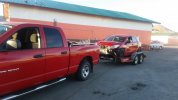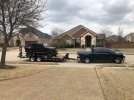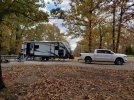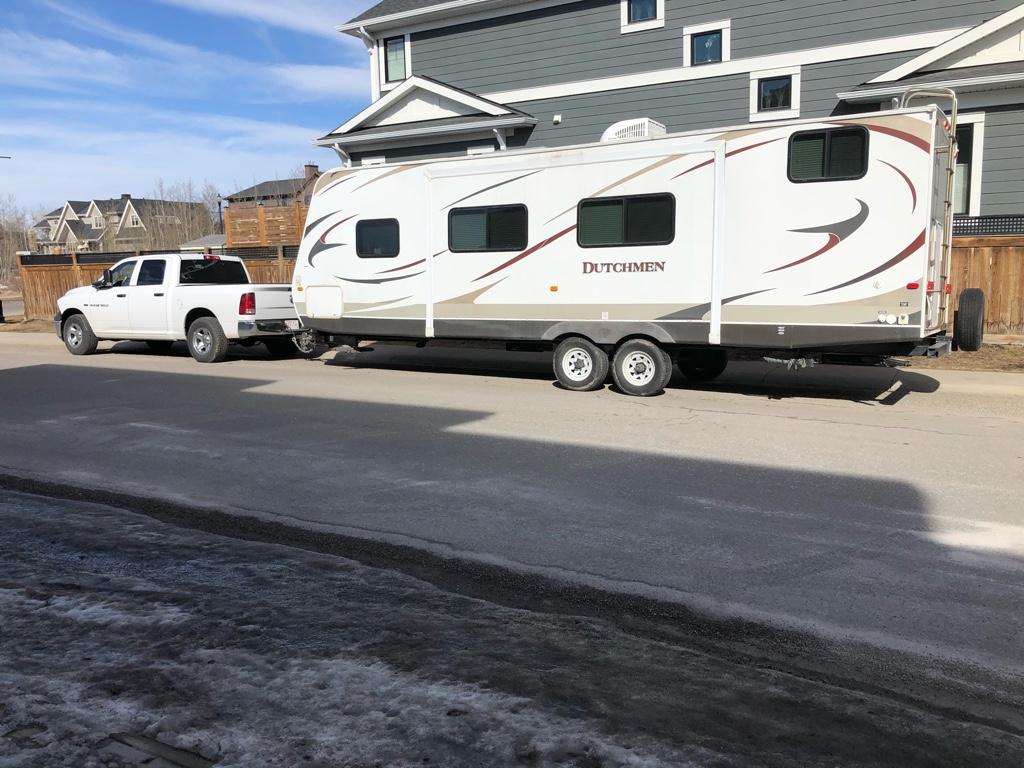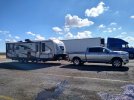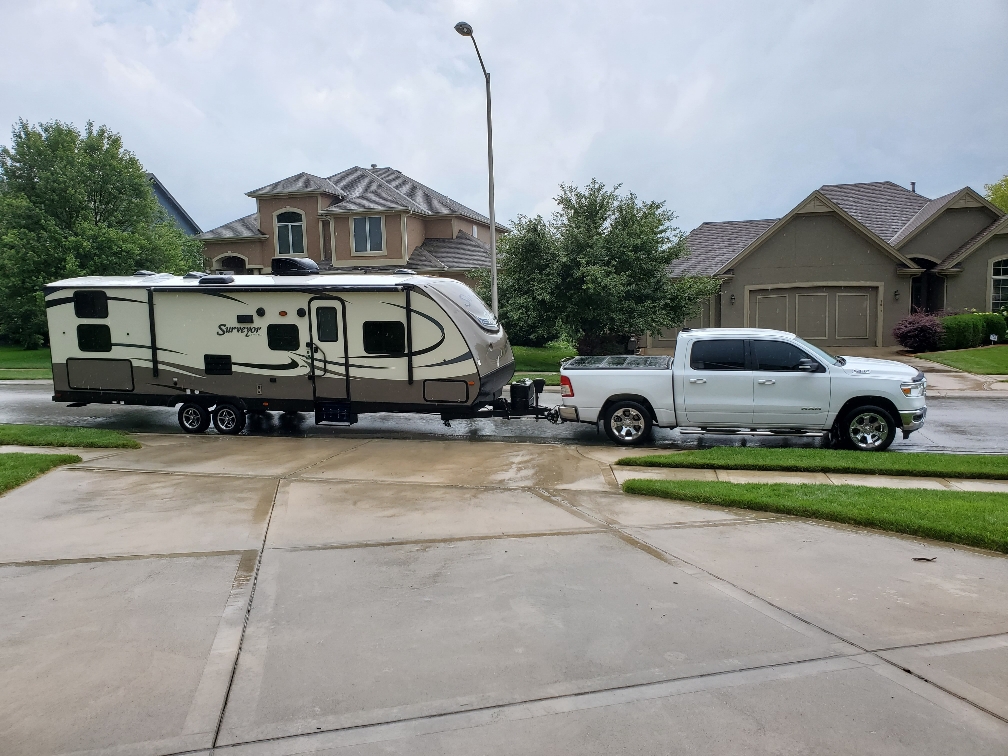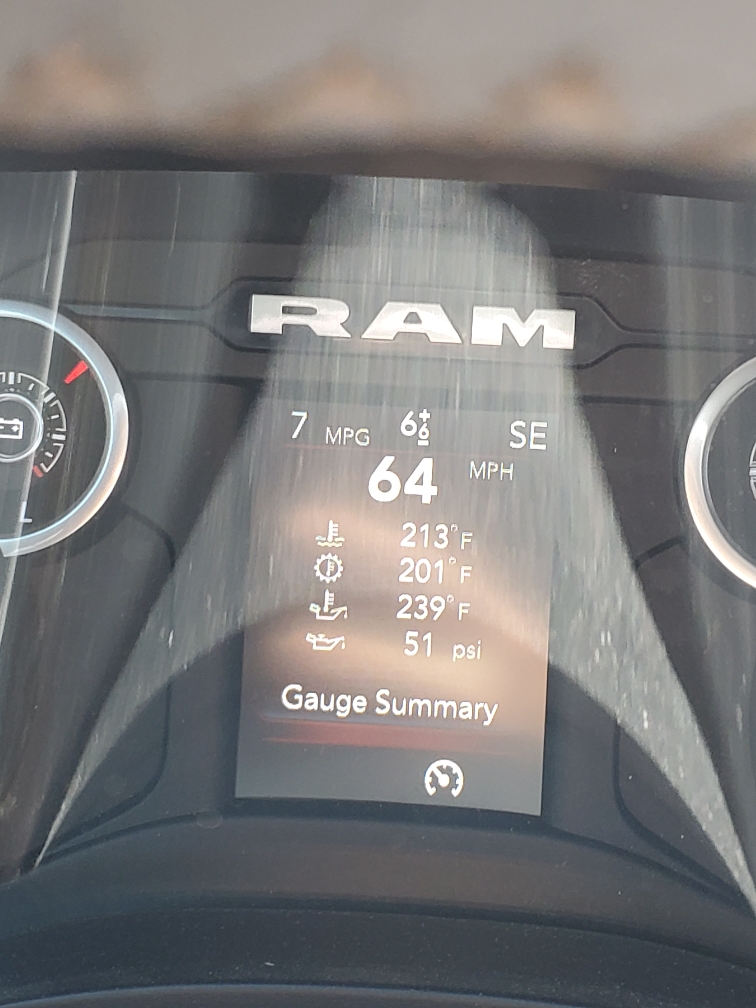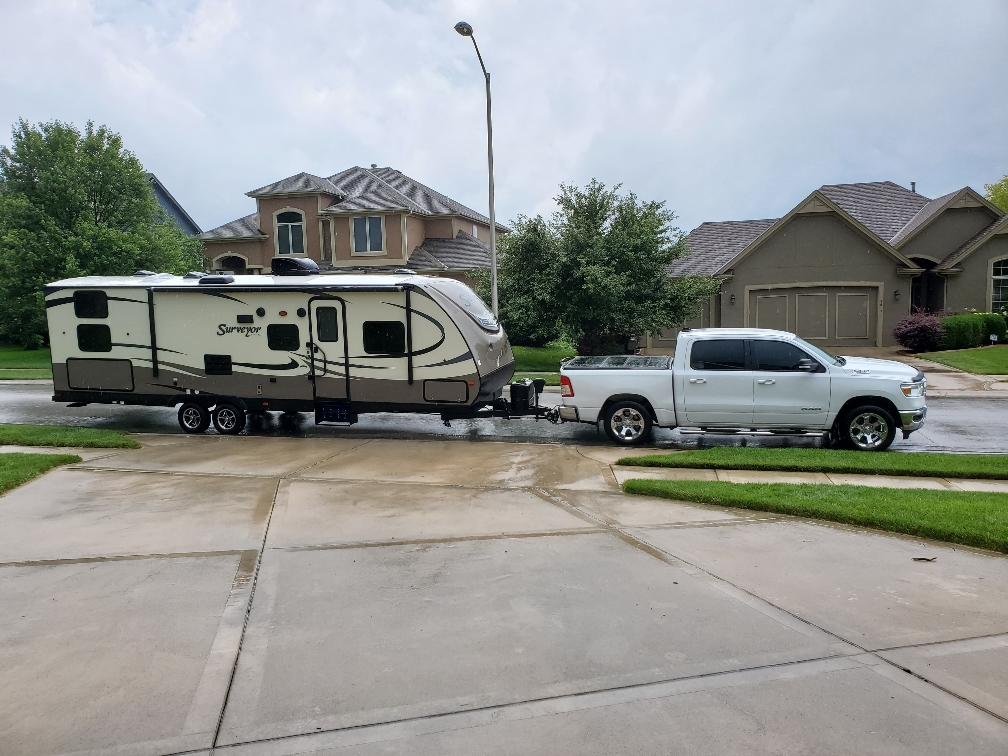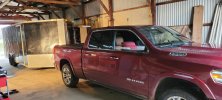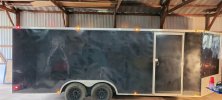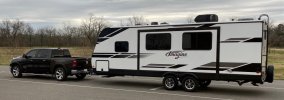RRlover55, With half tons it's rarely about power. Its most often about weight distribution magnified by soft suspension. People are simply not taught the how and the why. A flat bed load is one thing a tall high center of gravity wind sail known as a travel trailer or toy hauler is another. Unfortunately they are bunched together with the best marketing number. With the 4th gen 1500s 8k is a realistic comfortable two fingers driveable max tow for a TT. That is IF its set up optimally using a CAT type scale. I am sure with the 5th gens a little more due to improvements and the max drive axle weight being raised. Not that you can't tow more TT just that at that point even with proper weight distribution a HD would be a better tool for the job. Roofing nails with a sledge hammer, spikes with a roofing hammer, each can be done neither is ideal.
I transport new TTs & THs for the manufacturers for a living. Not to pick on Moparluver but if you look at the pic the front of his truck is lifted a few inches which is bad and compounded by the fact that the rear is squated a few inches. Center of gravity is raised braking traction is diminished. Its like you trying to balance on your heels instead of standing in a boxing stance. He is using a WDH but its not set to transfer near enough weight from his drive axle back to his steer axle and back to the trailer axles. This is why as he said it was a handful to drive. He needs to weigh his truck unloaded at a CAT scale to get his steer and drive axle weights. Pull off the scales pick up his camp ready ish TT roll back over the scales get another weight slip and pull off. The first slip normally costs about $12 each additional about $2.
Now he compares the two slips. He is going to have two main goals. First to find his tongue weight percentage. I adjust this towards 12.0 percent as its proven to be enough so that there is no sway at say 65 mph on the highway and its not putting more load on the truck than is necessary. Tongue weight here is found by adding the drive and steer axle weight together then subtract the combined drive and steer weight from the unloaded truck. This tells actual tongue weight. The reason it's done this way is because with the WDH tongue weight is dynamic not static. If you add that tongue weight number to the trailer axles weight number you have the gross as loaded TT weight.
Lets say his tongue weight showed 1,200 pounds and that his trailer axles weight showed 6,800. 1,200 plus 6,800 equals 8,000 pounds gross trailer weight. 1,200 divided by the 8,000 shows his tongue weight at 15.0%. IE tongue weight is heavier than it needs to be. That said if he redistributes too much weight and gets his tongue weight say below 10 percent eventually he will get a trailer that wants to sway at highway speed.
The second goal is to replace the unload steer axle weight. Once this or these two things have been accomplished you will notice the front of the truck has dropped to a stockish height and the rear has risen closer to a stockish height. This accomplished by redistributing weight three ways. The first thing I do is move some of the heavy stuff from the front of the TT back to over the trailer axles and lock it in best as you reasonably can. The second thing I do is move any weight that I can from behind the drive axle to in front of it or into the cab or best in the TT above the axles. Third and perhaps most important to adjust the hitch. Often you have to be more aggressive than the hitch manufacturers directions suggest. Now re-weigh and repeat until you get the best tongue weight front axle weight you can.
If you were two fisted driving that trailer to the scales you should now be able to drive two fingers home going 5 mph faster than you traveled on the way over. When a fast moving semi passes too fast instead of the bow wave sucking then pushing away your trailer then truck so that it moves you like an accordion, it only pushes you away feeling almost like your truck & trailer is one unit. This is confirmation of a job well done with the satisfaction of safe travel for your family and much easier more stress free driving. If someone pulls out in front of you and you swerve out and back in to get around them happy day because you are not upside down backwards in a ditch and staring on youtube. If the stop light turns and you have to stop hard you no longer slide through the intersections because the axle weight distribution allows the suspension and brakes to work as designed with maximum traction.
Lets say his truck weighed 6k. It would have looked something like this
steer 3,300
drive 2,700 = GVW 6k
With trailer
steer 2,900
drive 4,300 = GVW 7,200 (1,200 tongue weight 50 over max receiver, 400 pounds over 4th gen max drive axle, 250 pounds over 6,950 gvwr)
trailer 6,800
CVW 14,000
After redistribution
steer 3,300
drive 3,660 = GVW 6,960 (960 tongue weight 12% and meets all specs.
trailer 7,040
CVW 14,000
